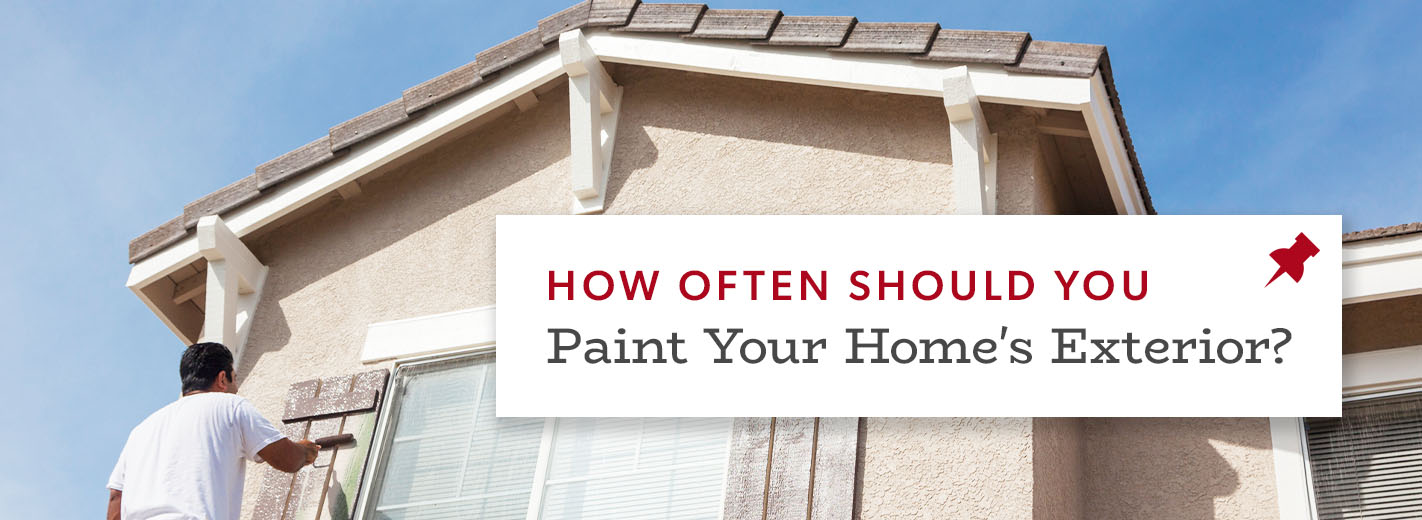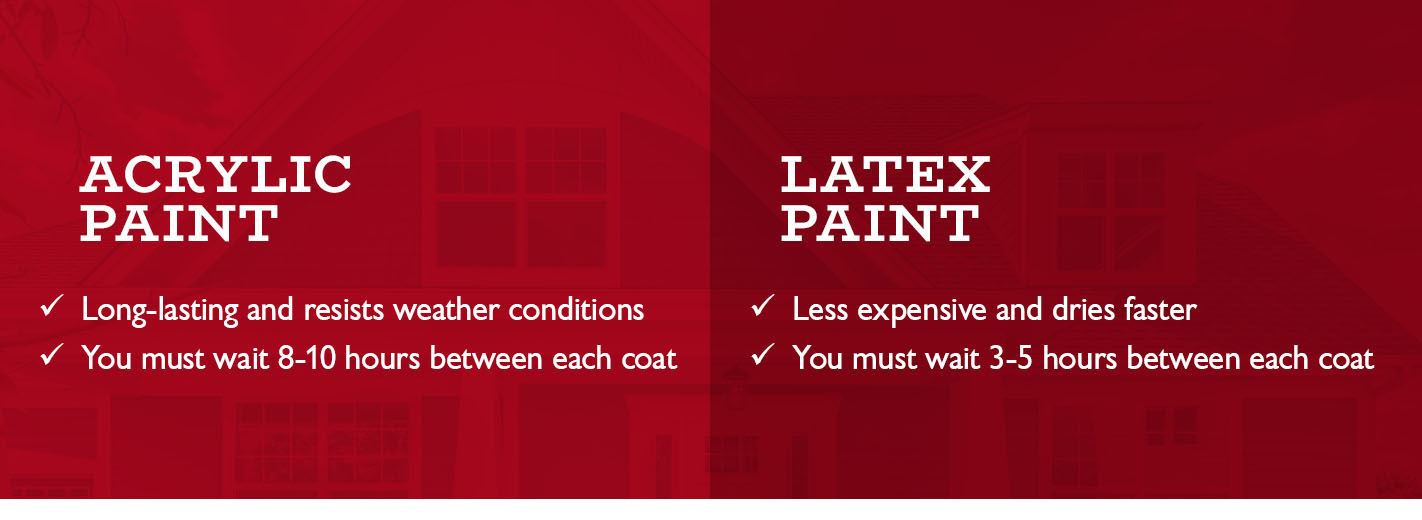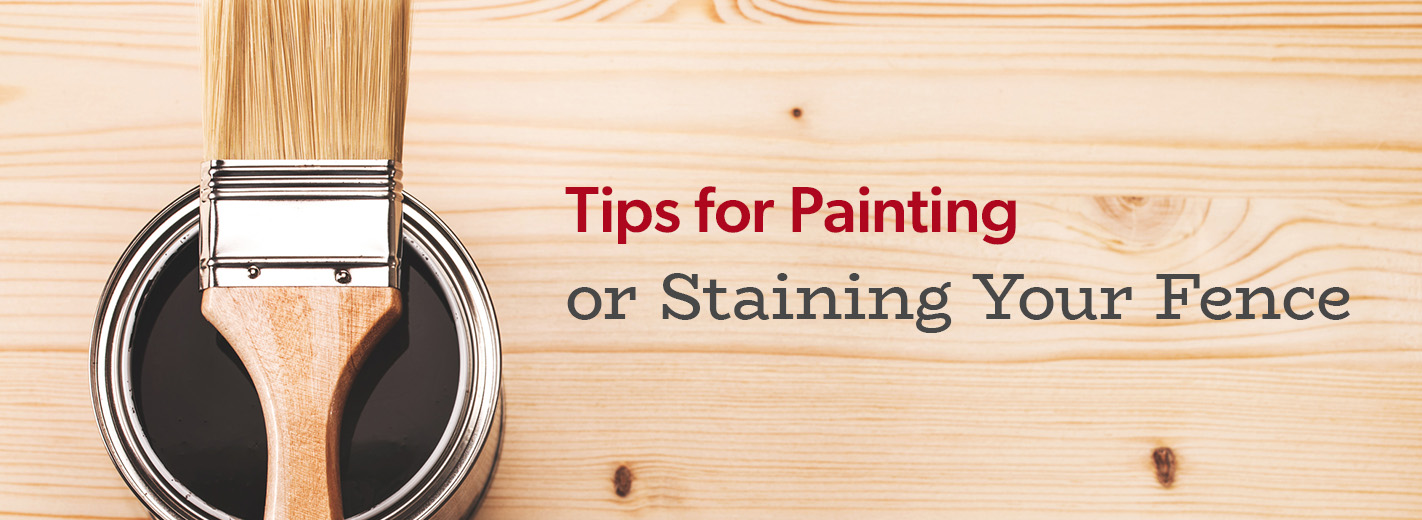
How Often Should You Paint Your Home’s Exterior?
Curb appeal is the “it” factor that makes your house stand out in your neighborhood, creates a memorable first impression, increases your property value and instills a sense of pride. A well-maintained exterior can communicate how much you care about keeping your property in good shape.
Unfortunately, remodeling projects like replacing your windows and siding can be costly, time-consuming and messy, while newly planted shrubs and trees mature slowly. In contrast, a new paint job immediately improves your house’s appearance for an instant impact.
How often to paint a house exterior depends on various factors. For example, when you own a house in Washington, D.C., you quickly learn that humid summers and wet winters can affect your home’s appearance. However, climate is not the only factor influencing how frequently you should paint.
Factors Influencing the Frequency of Painting Your Home Exterior
Several variables come into play when determining how often you should paint your home’s exterior.
- Siding material: Siding materials have different needs. For instance, wood requires more frequent maintenance than brick or vinyl.
- Paint quality: High-quality paints last longer and withstand the elements better.
- Previous paint job: Your previous paint job’s preparation and quality can affect how often you paint your home’s exterior.
Why Painting Your Home’s Exterior Matters
The benefits of regular exterior painting go beyond making your home look beautiful — a fresh coat of paint also protects your property’s siding and structural integrity. You can prevent costly repairs down the road and improve your home’s curb appeal by maintaining the exterior paint.
When to Repaint the Exterior of Your Home
An average house paint job lasts between three and 10 years. Here’s a quick guide to how often you should paint your home’s exterior according to different surface materials.
- Wood siding: Generally, it is best to paint wood siding every three to seven years, depending on the paint quality and the condition of the wood.
- Aluminum siding: Paint can last about five to 10 years on aluminum.
- Vinyl siding: Vinyl siding holds paint well, so you may only need to paint it once a decade.
- Stucco: Stucco exteriors wear slowly and generally need repainting every 10 years.
- Brick or cement: Because painted brick and cement are porous surfaces that retain moisture, you should repaint them every 10 years for optimal maintenance.
Exterior House Painting Timeline
The time it takes to paint a home varies based on your property’s size, the labor involved in completing the project, weather conditions and the paint you use.
Choose the Right Paint
The average life span of exterior paint differs depending on the paint you choose. The two most common paints for exterior buildings are acrylic and latex.

- Acrylic paint is long-lasting and resists weather conditions and other natural variables such as fading or sun damage. You must wait eight to 10 hours between each coat.
- Latex paint is a popular alternative to acrylic, since it is less expensive and dries faster. While temperature and humidity can influence drying time, latex paint typically takes one to three hours to dry. You must wait three to five hours between applying more coats.
Paint experts recommend waiting 24 hours or more for your home’s exterior to dry completely.
Can You Do It Yourself?
While some homeowners choose to tackle the painting job themselves, others wisely hire professionals to benefit from their skills and expertise. While DIY projects can be rewarding, taking on a big project like exterior painting yourself may not be the best decision if you lack the necessary time, knowledge and resources. Here are some reasons to consider bringing in an experienced crew.
- A professional painter knows how to properly prepare and clean the surface, recommend the correct paint and apply it evenly for a stunning, long-lasting finish. Inexperienced DIY painting projects can result in inconsistent coverage, drips, streaks and an unsatisfying result.
- Exterior painting can be physically demanding and time-consuming, especially for larger properties. Professional painters use safety equipment and specialized techniques to complete the project quickly, saving you from fatigue, frustration and potential injuries.
- Weather conditions may complicate exterior painting projects. Trained painters closely monitor the forecast and adjust their schedules accordingly. They also take precautions to work around inclement conditions, such as setting up temporary shelters or protective coverings to shield the work area from rain or wind.
- Hiring painters can save you money in the long run. Professionals have access to bulk pricing on materials, know how to minimize waste and can prevent costly mistakes that may arise from DIY attempts. A well-executed paint job can add to your home’s value, which can be beneficial if you plan to sell soon.
3 Signs It’s Time to Repaint Your Home’s Exterior
Let’s review three example scenarios of homeowners who need a fresh coat of paint. Look for these warning signs and seek immediate help from an expert if you see paint deterioration or potential health risks.
1. Peeling, Chipping or Cracking Paint
John bought an old house to renovate. The house’s exterior paint is peeling in some places, resulting in visible cracks and chips. John must act quickly to prevent further structural damage.
2. Fading Colors
Sarah inherited her grandmother’s house and moved in with her spouse and children. The home’s colors appear dull and lifeless, indicating it’s time for a fresh coat of paint to improve curb appeal and avoid deterioration.
3. Moisture Damage
Elina, a first-time homeowner, purchased a home but soon discovered visible water stains and mold growth, indicating that the paint no longer safeguards her home. She should address this quickly for her health and have her new home painted by professionals who can also deal with mold growth.
Get a 100% Satisfaction Guarantee With Rent Painters


